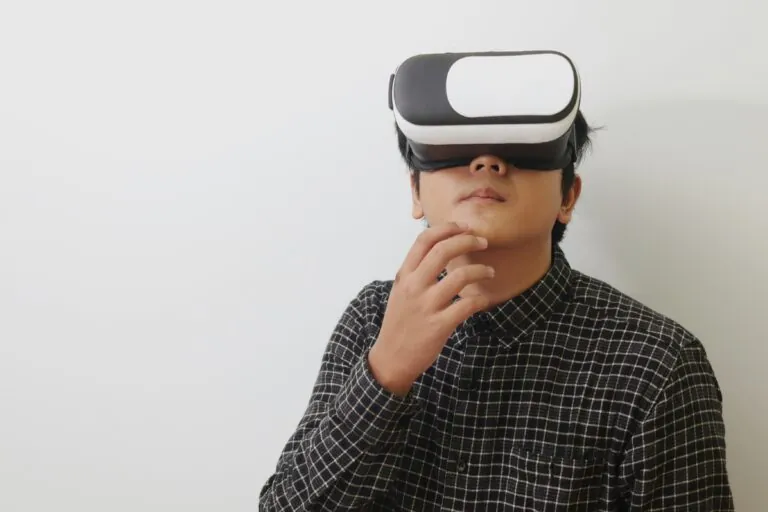In an era where technology is interwoven into the fabric of daily life, the importance of digital literacy cannot be overstated. Bridging the gap between seniors and youth through mutual digital literacy education can have profound societal implications. This discussion delves into an innovative approach to digital inclusion – a unique alliance between seniors and youth aimed at closing the digital divide.

Highlighting stories of unity, this exploration presents an insightful perspective on the power of intergenerational collaboration. Empowered by technology, seniors find new ways to engage in society, while young people gain invaluable wisdom and appreciation for the past. Together, they contribute to a more inclusive digital landscape, shattering stereotypes and promoting understanding across generations.
Peeling back the layers of this contemporary issue, the exploration will shed light on the challenges and triumphs of this initiative. From shared learning experiences to the development of meaningful relationships, the union of seniors and youth in this digital journey presents a wealth of opportunities. So, gear up to dive into an enlightening exploration of how these two diverse generations unite to bridge the digital divide.
The Digital Divide: A Growing Concern
The digital divide, the gap between those who have access to technology and those who don’t, is a pressing issue in the modern era. While it affects various demographics, the divide is particularly prominent between seniors and youth. The latter group typically grows up surrounded by technology, making digital literacy almost second nature. In contrast, seniors may struggle with digital tools due to limited exposure or accessibility.
Therefore, bridging this divide becomes critical. Not only can it enhance seniors’ quality of life, but it can also foster cross-generational understanding and connections.
Role of Youth in Bridging the Digital Divide
Young people, owing to their tech-savviness, can play a significant role in helping seniors cross the digital divide. They can offer technical support, provide tutorials, and instill confidence in seniors to explore digital tools on their own. However, to be effective, they need to adopt an empathetic and patient approach.
Providing Technical Support
One of the main ways youth can help seniors navigate technology is by providing technical support. This can include setting up devices, troubleshooting issues, or even walking them through new software updates. Seniors may often find technology intimidating, and having someone to guide them can greatly alleviate their anxiety.
Conducting Tutorials and Workshops
Another approach is organizing workshops or tutorials on various technological tools. Topics can range from how to use smartphones, tablets, and computers to understanding social media, video conferencing, or online banking. This structured learning environment can help seniors grasp digital concepts better.
Benefits of Cross-Generational Collaboration
In a world that is increasingly interconnected through technology, fostering relationships between different generations has never been more important. Cross-generational collaboration, especially when it involves bridging the digital divide, is a powerful catalyst for social, educational, and emotional growth. When seniors and youth come together with a common goal—such as improving digital literacy—the impact extends far beyond the immediate task. It leads to stronger communities, deeper empathy, and meaningful mutual enrichment.
Fostering Mutual Respect
One of the most profound benefits of intergenerational collaboration is the growth of mutual respect. For younger people, working with older adults on technology-related issues offers them an opportunity to see aging in a new light. They begin to recognize that while seniors may lack familiarity with digital tools, they often bring unparalleled depth in life experience, resilience, and wisdom. Stories from decades past, reflections on change, and insights about relationships or challenges provide rich learning opportunities for the younger generation.
For seniors, being guided patiently by younger individuals can break stereotypes about youth being inattentive or self-absorbed. It reveals a generation willing to help, eager to share knowledge, and respectful of their elders. This mutual appreciation builds bridges that are rarely found in other social contexts and can become the foundation for lasting intergenerational friendships.
The act of teaching and learning also shifts the power dynamic. Youth may come into the exchange as digital experts, but they quickly become learners in the broader sense—of history, resilience, and wisdom. Meanwhile, seniors who are used to being viewed as passive recipients of care or instruction are empowered through their own willingness to adapt and engage.
Promoting Social Inclusion
Digital literacy is a gateway to social inclusion in the 21st century. Seniors who lack access to or understanding of digital tools are more likely to experience isolation, especially in societies where communication, commerce, healthcare, and entertainment have migrated online.
Cross-generational collaboration can dramatically reduce this digital exclusion. Once equipped with the skills to use video calls, social media, email, and online forums, older adults are able to reconnect with distant relatives, join interest groups, and participate in virtual events. This re-engagement with social life can significantly reduce feelings of loneliness and improve mental well-being.
Moreover, when seniors begin to use digital tools confidently, they also become more visible and active in their communities. They can share their stories, volunteer remotely, advocate for causes they care about, and continue to contribute meaningfully to society. Intergenerational collaboration does not just reduce the digital divide—it builds a sense of belonging.
Encouraging Lifelong Learning
The notion that learning stops at a certain age is outdated. Lifelong learning is essential for cognitive health, emotional fulfillment, and personal growth. When seniors work alongside youth to develop digital competencies, it reignites a passion for learning that can extend to other areas as well.
Cross-generational collaboration can inspire seniors to explore new digital skills, such as online banking, e-book reading, or creative tools like digital photography and video editing. Learning in a supportive, low-pressure environment led by younger mentors allows seniors to feel safe making mistakes and encourages a growth mindset.
At the same time, youth who engage in teaching often develop stronger communication and leadership skills. Explaining complex concepts in simple, clear terms reinforces their own understanding. They learn patience, adaptability, and how to meet learners where they are—all valuable traits in any career or social setting.
Enhancing Emotional Well-Being
Emotional well-being is closely linked to feeling valued, understood, and connected. For both seniors and youth, cross-generational collaboration offers emotional benefits that can have long-lasting effects.
Seniors may experience a boost in confidence and self-worth as they acquire new skills and realize they can still adapt and thrive in a changing world. The encouragement and support from a younger person can serve as a powerful reminder that they are not forgotten or left behind.
Youth benefit from the emotional richness of intergenerational dialogue. They often gain a broader perspective on life, develop a sense of empathy, and find satisfaction in making a positive impact on someone else’s life. This exchange often nurtures emotional intelligence and a deeper understanding of human experiences.
Additionally, the process of collaboration provides moments of joy, laughter, and achievement that both generations can celebrate. These shared emotional experiences create bonds that can evolve into lasting friendships or mentorship relationships.
Building Stronger Communities
At a societal level, cross-generational collaboration contributes to the cohesion and resilience of communities. When individuals across age groups work together, the community benefits from a broader pool of knowledge, skills, and perspectives.
Seniors bring wisdom, institutional memory, and a strong sense of civic responsibility. Youth bring innovation, technological savvy, and fresh ideas. Together, they create a more balanced and holistic approach to problem-solving, community engagement, and policy advocacy.
Programs that encourage cross-generational mentorship often see improved outcomes in volunteerism, educational engagement, and public health. Communities that foster these connections are more inclusive, compassionate, and better equipped to support all their members.
Schools, libraries, senior centers, and nonprofit organizations play a crucial role in facilitating these partnerships. Community centers that host tech-help workshops, digital cafes, or storytelling events can be powerful venues for these interactions to take place. These structured programs can provide opportunities for youth service-learning and senior skill-building simultaneously.
Inspiring Civic Engagement
Civic engagement is vital for healthy democracies and vibrant local cultures. Seniors and youth are often seen as opposites on the civic engagement spectrum, but cross-generational collaboration can challenge that assumption.
When younger and older citizens collaborate on digital literacy or community projects, it often sparks broader conversations about social responsibility, public policy, and activism. Seniors can pass on a tradition of advocacy and civic pride, while youth can introduce modern tools like online petitions, digital organizing, and social media campaigns.
This shared engagement empowers both groups to feel more connected to the world around them. It encourages action, builds confidence, and reinforces the belief that everyone has a role to play in shaping society, regardless of age.
Cultivating Cultural Continuity
One of the subtler but equally significant benefits of cross-generational collaboration is the preservation and transmission of cultural knowledge. Digital tools can become a medium through which seniors pass down stories, recipes, music, language, and traditions to younger generations.
By teaching seniors how to record videos, write blogs, or digitize family photos, youth are not just offering technical skills—they are preserving heritage. Seniors become digital historians, curating family or community narratives that might otherwise be lost.
Youth, in turn, gain a deeper appreciation for their roots and identity. They become stewards of legacy and culture, understanding that history is not just found in textbooks but lives in the people around them.
Reducing Age-Based Stereotypes
Cross-generational collaboration is a powerful antidote to ageism. Too often, seniors are seen as technologically incompetent or resistant to change, while youth are stereotyped as self-absorbed or dismissive of tradition. When the two groups collaborate, these misconceptions are challenged and often dismantled.
Seniors prove that learning is ageless, that adaptation is possible, and that curiosity does not fade with time. Youth demonstrate compassion, respect, and a willingness to learn from their elders. The result is a reframing of how both groups are perceived by each other and by society.
In schools, families, and public discourse, highlighting successful cross-generational projects can shift cultural narratives. Rather than focusing on generational divides, the emphasis moves to collaboration, mutual growth, and shared purpose.
Developing Skills for the Future
In an increasingly globalized and rapidly changing world, adaptability, empathy, and collaboration are essential skills. Cross-generational engagement cultivates these traits in both youth and seniors.
For youth, teaching technology enhances their ability to communicate clearly, problem-solve, and practice leadership. These are transferable skills that serve them in future workplaces, educational environments, and civic roles.
For seniors, engaging in technology training keeps cognitive skills sharp and increases independence. They are empowered to manage their finances online, access healthcare portals, communicate with family, and explore new hobbies.
Both groups gain confidence and develop intergenerational competence, which is a growing need in diverse workplaces and communities. In essence, these collaborations prepare individuals of all ages to thrive in a multigenerational society.
Initiatives to Bridge the Digital Divide
Recognizing the importance of bridging the digital divide, several initiatives have been launched worldwide. These efforts aim to bring together seniors and youth in a mutually beneficial environment.

Tech-Savvy Seniors Program
This program, run in Australia, provides free or low-cost training to seniors to help them get online. The courses are conducted by youth volunteers, fostering cross-generational learning and understanding.
SeniorNet
SeniorNet is a non-profit organization in the United States that offers computer and Internet education for older adults. Young volunteers run the courses, facilitating a productive exchange of skills and experiences.
Challenges and Solutions
While efforts are underway to bridge the digital divide, various challenges persist. Overcoming these obstacles is crucial to ensure that all seniors have the opportunity to become digitally literate.
Technological Accessibility and Affordability
One of the significant barriers for seniors is the lack of access to technology. Many seniors may not have devices or an internet connection. This problem can be addressed by offering subsidized devices and internet plans for seniors.
Resistance to Technology
Some seniors might resist learning technology due to fear or lack of interest. Encouraging them to understand the benefits of technology, such as staying connected with loved ones or accessing online services, can help overcome this resistance.
In conclusion, the initiative of “Bridging Generations: Seniors and Youth Unite to Close the Digital Divide” significantly contributes to diminishing the digital gap existing between generations. By fostering intergenerational cooperation, it not only empowers seniors with digital proficiency but also instills a sense of community and understanding among the youth. This innovative approach boosts digital inclusivity and promotes a holistic societal growth, ensuring that no one is left behind in this rapidly advancing digital era. Moreover, it provides an opportunity for the younger generation to comprehend and appreciate the wisdom and experiences of the elders, while seniors get to keep up with the technological advances and become more self-reliant in their daily lives. This symbiotic relationship nurtures a harmonious society that values both tradition and innovation. Thus, it is imperative to continue and proliferate such initiatives to ensure a balanced digital ecosystem where all generations can thrive together. Bridging the digital divide is not merely a technological challenge, but a societal one, and with endeavors like these, we are making significant strides towards a more inclusive digital future.



